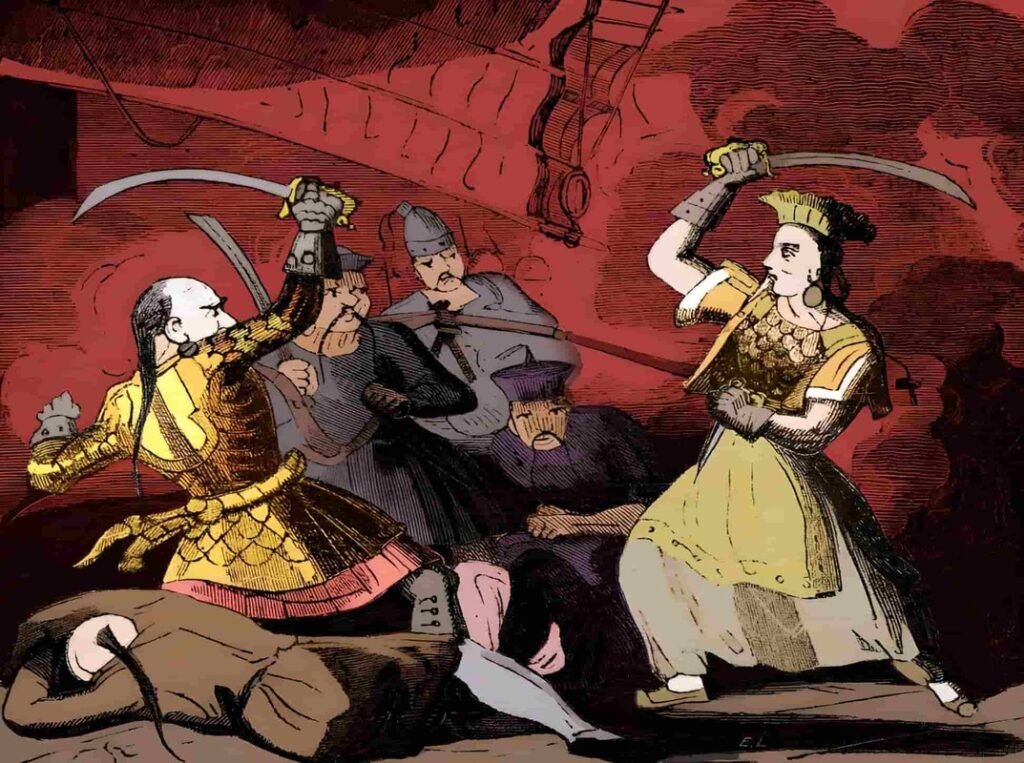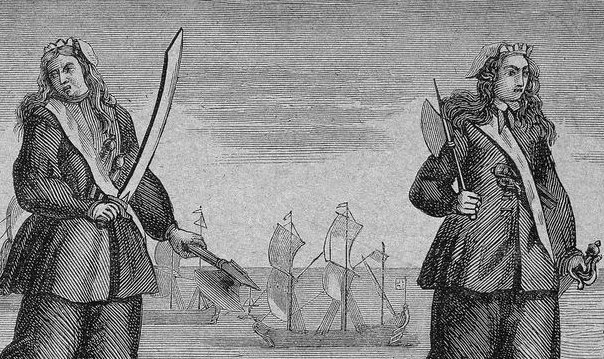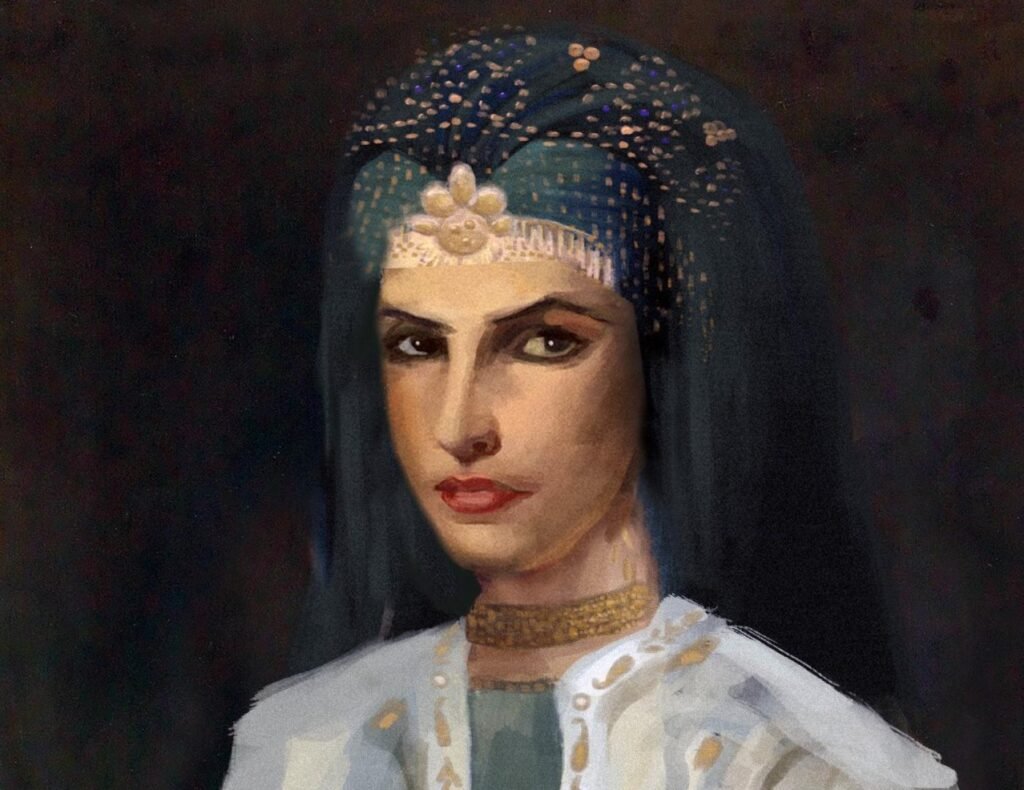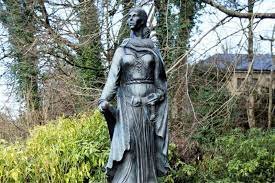Male crews were predominantly recruited throughout the centuries of piracy since the first pirate ships sailed the Mediterranean and North Sea, followed by the Golden Age of Piracy and large 19th-century pirate fleets in the Chinese Sea. As superstitions evolved and written and unspoken laws shaped pirate culture, an environment emerged where the presence of female pirates on board was almost always unwanted.
This perception held that having women near the crew, who spent months at sea, would disrupt their work ethic, lead to conflicts, and bring bad luck to all aboard. However, numerous remarkable women have disguised themselves and infiltrated pirate crews, successfully serving undetected throughout history.
Additionally, some women revealed their identity to the crew, earned their trust, fought bravely with them, and eventually gained the privilege of becoming ship captains and leaders of organized fleets of pirates. Let’s take a look at five of the most famous female pirates in history:
Zheng Yi Sao

Zheng Yi Sao, also known as Ching Shih was a unique pirate leader born in 1775, who became one of the most successful and influential pirates in history. She rose to fame due to her remarkable leadership, where she commanded over 300 pirate ships and 20,000 pirates.
Her success was not only attributed to the size of her fleet but also to the fact that she was female, uncommon in pirate history. She created a strong naval force, and her coalition with other Cantonese fleets became a daunting threat to governments with naval interests in the Chinese Sea.
The female Chinese pirate obtained power and control over the pirate fleet after marrying Cheng I in 1807. After Zheng Yi Sao’s death, she immediately took control and established her political maneuvers. Her absolute control over the fleet was possible because of her insistence on a strict pirate code, which influenced the pirate sailors to create a tight-knit and organized group that was unbeatable. The British government along with many other international governments found Ching Shih’s Red Flag Fleet tough to beat.
In 1810, Ching Shih began to lose her grip on the fleet, and the pirate alliance broke into six distinct groups. She then accepted an opportunity offered by Qing Emperor Jiaqing, who promised full royal pardons to her and Chang Paou.
After receiving the pardon, Ching Shih continued hunting remnants of the dissolved Red Flag Fleet, while Ching Shih returned to land and became the Mistress of a local brothel. She resumed her former life as an organizer of smuggling and gambling enterprises.
In 1844, Ching Shih died in her sleep at the age of 69 in Macao. Today, she is remembered as one of the most successful pirates who not only survived but lived to die of old age peacefully.
Anne Bonny

Anne Bonny was a strong-willed and independent woman who lived in the 18th century, a time when women had few rights and men dominated important decision-making. Born illegitimate to William Cormac, an Irish lawyer, and his servant Marry Brennan, Anne grew up in Charleston, South Carolina, after her family moved to start a new life in the New World.
There are many stories about Anne’s life during her teens, including alleged murder and self-defense against s*xual assault. At the age of 16, she fell in love with James Bonny, a small-time pirate, despite her father’s disapproval. She was eventually disowned by him and left to fend for herself.
Anne went on to make history by joining the pirate crew of famous pirate Captain Jack “Calico Jack” Rackham, her lover at the time. Rackham was not very successful as a pirate but knew how to spend money with style.
Anne’s life changed when she met Mary Read, another female pirate, on Rackham’s ship. The two women became good friends, and some sailors even speculated that they were in a romantic relationship. However, their piracy career came to an end when Captain Barnet, a former pirate who had joined the British Navy, attacked Rackham’s ship while most of the crew was drunk. Anne and Mary were among the few who resisted but were eventually overpowered.
Anne and Mary’s trial for piracy caused a sensation because they were revealed to be women who fought for equality and escaped traditional restrictions. While both were found guilty and sentenced to death by hanging, they claimed to be pregnant and were spared. Sadly, Mary died in prison from a fever, but Anne’s fate is unknown.
Despite the legends and myths surrounding Anne Bonny’s life, what is certain is that she was a powerful woman who defied societal norms and lived life on her own terms, making significant contributions to the history of piracy in the process.
Mary Reed
Mary Read was born in Devon County, England, in the late 17th century. Her childhood was marked by tragedy as her father died before she was born, and her half-brother Mark passed away soon after. Mary’s paternal grandmother supported Mary and her mother because she thought that her grandson Mark was still alive. To keep the death of Mary’s brother a secret from his grandmother, Mary was raised as a boy, pretending to be her older brother.
When Mary was about thirteen, her grandmother died, and she had to find a job. She became a footboy to a wealthy French woman, but she soon became unsatisfied with her position. Mary escaped and boarded a man-o-war. Later she joined the army, where she met her future husband. They left the army, married, and opened an inn called Three Horseshoes near Castle Breda. After just a few months of marriage, Mary’s husband got sick and died.
Desperate to escape, Mary rejoined the army and boarded a Dutch ship that sailed to the Caribbean. Almost at the reach of its destination, Mary’s ship was attacked and captured by the pirate Calico Rackham Jack, who took all English captured sailors as part of his crew. Unwillingly she became a pirate. However, soon after, she started to like the pirate way of life. When she had a chance to leave Rackham’s ship, Mary decided to stay.
On Rackham’s ship, she met Anne Bonny, and being the only woman on the ship and sharing a lot in common, they quickly became good friends. In October 1720, Mary’s pirate career came to an end when Captain Barnet captured her in a desperate battle. In Port Royal, Rackam and his crew were found guilty of piracy, but Mary and Anne were spared after claiming they were pregnant.
Later, Mary Read died in prison from fever, along with her unborn child. She was buried at St. Catherine’s parish in Jamaica.
Sayyida al-Hurra

Sayyida al Hurra was an influential figure in the Islamic world during the Corsair Age. She was born in 1485 as a member of the prominent Muslim family, Banu Rashid, and was forced to flee from Morocco when the armies of Queen Isabella I of Castile and King Ferdinand II of Aragon attacked and conquered the kingdom of Granada in 1492.
After settling in Cahouen, she married an elderly businessman, eventually succeeding in his work after he died in 1515. By then, she held the role of governor of Tétouan, and she even refused to travel to Fez to marry her new husband, King Ahmed al-Wattasi.
Sayyida al Hurra never forgot the time she had to flee from Morocco and vowed to somehow avenge her land against Christian invaders and eventually return to Andalusia. To make her revenge into reality, she allied with Barbarossa of Algiers, who taught her about the ways of piracy in the Mediterranean and allowed her to operate there.
During her pirating years, she was often viewed by Europeans as the only viable person that could be contacted for negotiations for the release of Christian captives.
Sayyida al Hurra was effective at sea, and her pirate booty brought many riches to her and her city. In 1540 she organized and participated in a large and successful pirate raid on Gibraltar, in which pirates managed to fill all their ships with stolen goods and slaves.
Some historians speculate that her success may have been due to her acceptance as a female leader by other Muslims, possibly due to the strong tradition of female leaders from her homeland of Andalusia. Still, others believe that she was respected simply for her successful abilities as a pirate leader.
After 30 years of ruling Tétouan and raiding the Mediterranean, Sayyida al Hurra was overthrown from power in 1542 by her son-in-law. Her fate beyond that point is unknown. She managed to retain the title of queen after her husband died, becoming the last queen in the history of Islam who managed to rule independently. She was one of the most iconic female pirates of all time and a very important figure in the modern age of Western Islam.
Grace O’Malley

Grace O’Malley, also known as Gráinne Mhaol, was born into a wealthy seafaring family in Ireland in 1530. As a young girl, she learned to sail and became the leader of her own crew. When she was around 17 years old in 1546, O’Malley married Dónal a Chogaidh in a political marriage, which enlarged the O’Malley family’s lands and naval fleet.
However, after a year of marriage, she divorced Burke and took with her the castle of Rockfleet, which guarded her significant harbor. She bore one son for Bourke named Tiobóid, who eventually reached the title of 1st Viscount Mayo in 1626 by Charles I of England.
As her influence rose, Grace became involved in several political struggles with surrounding nations and openly rebelled against England. She even offered her fighting men to the Lord Deputy of Ireland, who protected Irish and Scottish interests against England.
Her exploits at sea created several folk tales and legendary exploits that are still told today in Ireland. In 1576, she kidnapped Lord Howth’s grandson and heir, Christopher St Lawrence, 10th Baron Howth, but released him under the promise that Howth Castle would always remain open to unexpected visitors.
By 1593, Grace was in conflict not only with England but also with the Kingdom of Ireland, which she believed was trying to limit her influence over the large land she owned. During that same year, the English governor of Connacht, Sir Richard Bingham, managed to capture her two sons Tibbot Burke and Murrough O’Flaherty, and her half-brother Dónal na Píopa.
O’Malley promptly sailed for London to personally speak to Elizabeth I, Queen of England, and secure their release. After a long talk, the Queen and O’Malley came to an agreement that saw O’Malley stop supporting Irish lords who fought for the independence of their lands. When she returned to Ireland, Grace continued backing Irish independence during the entirety of the Nine Years’ War between 1594 to 1603.
During her entire life, Grace O’Malley managed to retain the reputation of a fierce leader and smart politician who successfully protected the independence of her lands during a time when much of Ireland fell under English rule. She died in Rockfleet Castle in 1603, the same year as the Queen of England.
